Evans Races Cabinet and Coin Head
The Evans Races cabinet is like a piece of furniture. It has numerous doors to facilitate access to all the electronics and mechanisms. The wood used is bird' eye maple and walnut. There are many reinforcements to make sure players do not destroy the game. There are two methods of playing and the operator can switch between the two by changing a plug setting on the relay board. This game has an score motor that allows the operator to change the method by simply flipping a remote switch.
Free play mode allows the player to bet on a horse with a coin. The winnings are indicated as credits projected onto the backglass. These credits can then be used for future games by pushing the plunger of the horse predicted to win. Once all credits are used up, a coin must again be played to start another game.
Payout mode requires the player to bet coins in the slot of the horse they predict will win. The winnings are delivered to a hopper at the bottom of the cabinet.
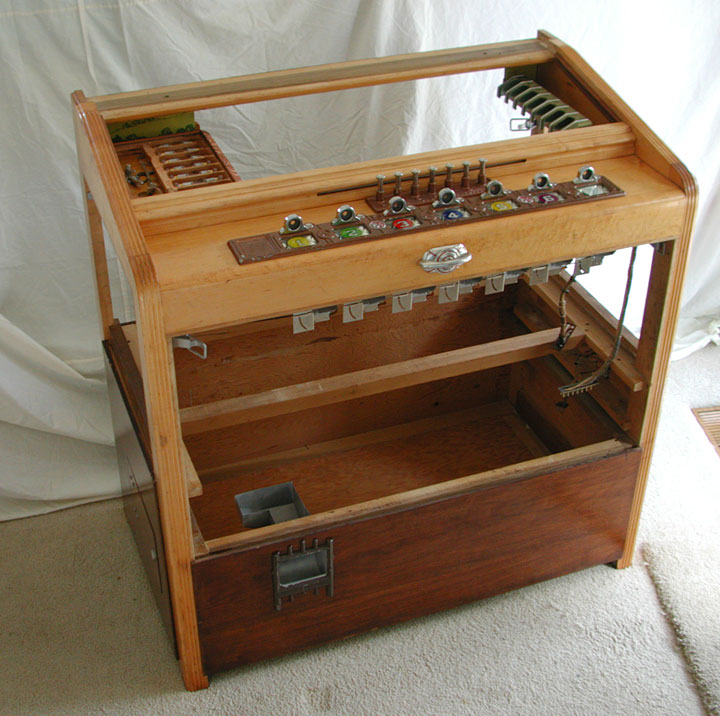
The cabinet was in good condition. The bottom board was coming apart and needed to be nailed again. There was excessive corrosion resulting from spills of liquid on the top glass. The liquid runs down the glass and into the front molding. There is a fluorescent lamp under the front moulding which collected the liquid.
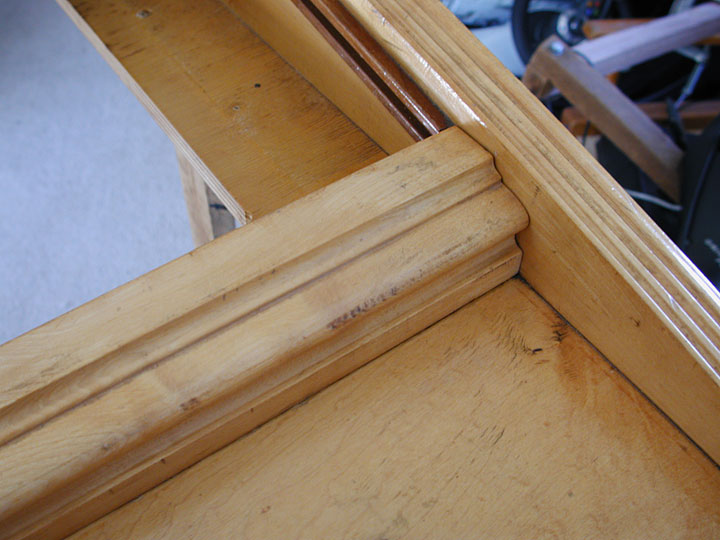
The front moulding holds the front edge of the playfield glass and covers the fluorescent lamp.
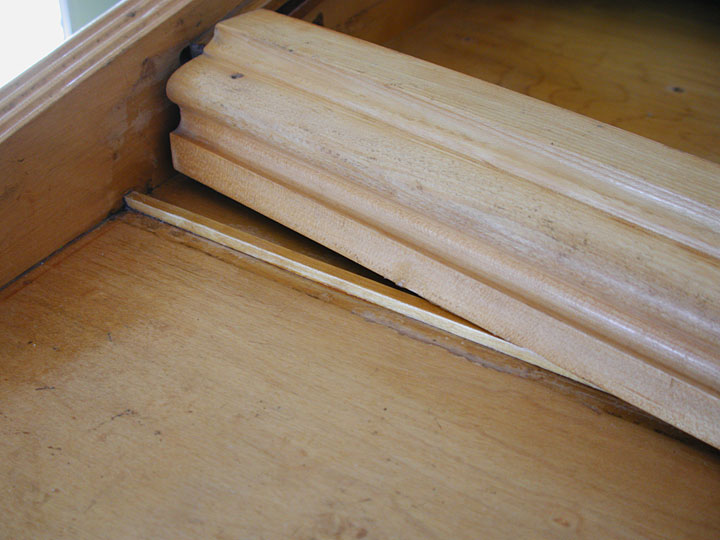
The location of the front moulding is reinforced with a guide strip that is glued to the main cabinet. The front moulding has a groove in the bottom to accommodate the strip.
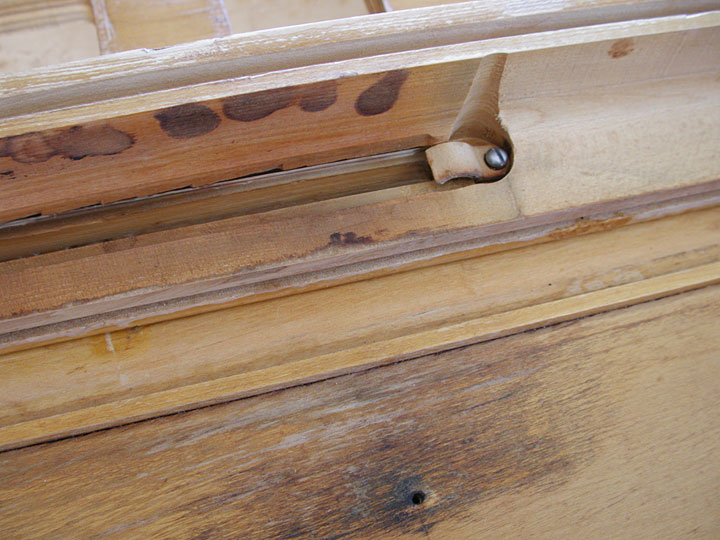
This is the bottom of the front moulding showing the thin slot that allows for the illumination of the buttons and coin slots. The glass covers the lighting slot and also includes a yellow filter. The yellow filter crumbled when removed. The color of the replacement fluorescent tube can be matched to the light of the original lamp and filter. The drips of liquid can still be seen on the upper part of the moulding and the resulting stains on the cabinet.
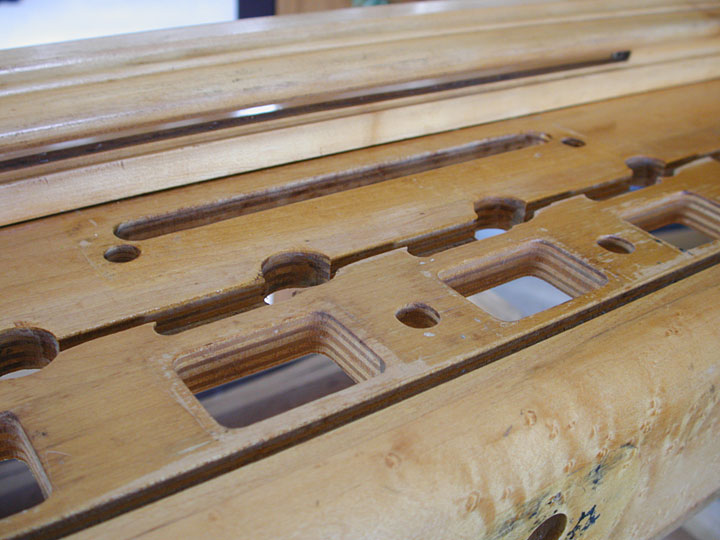
The routing for the free play buttons and the coin slots is complicated. It is placed deep into the wood in order to prevent tampering by the player.
The reverse painted glass numbers indicating each horse are held in place by the large casting. Unfortunately the reverse pain rests on the wood and in some cases, sticks to it. Removal of the glass allows the paint decorations to flake off.
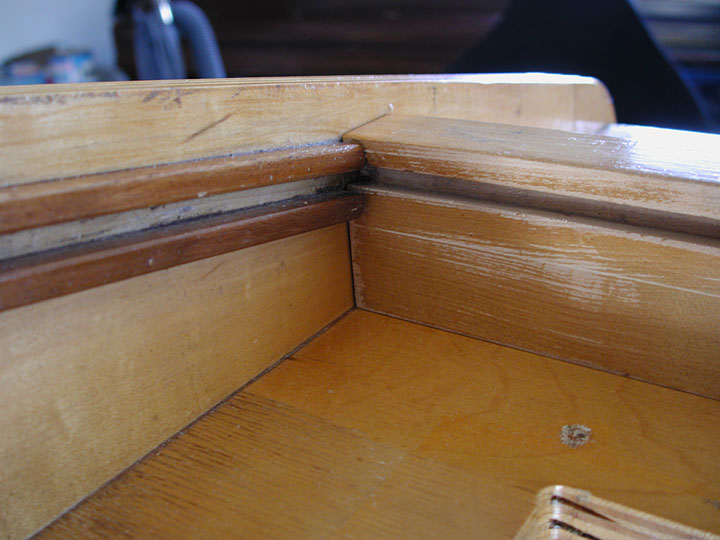
The slot that holds the playfield glass in position is not aligned correctly to the slot in the front moulding. As a result it is difficult to insert the glass as it must be raised to enter the moulding.
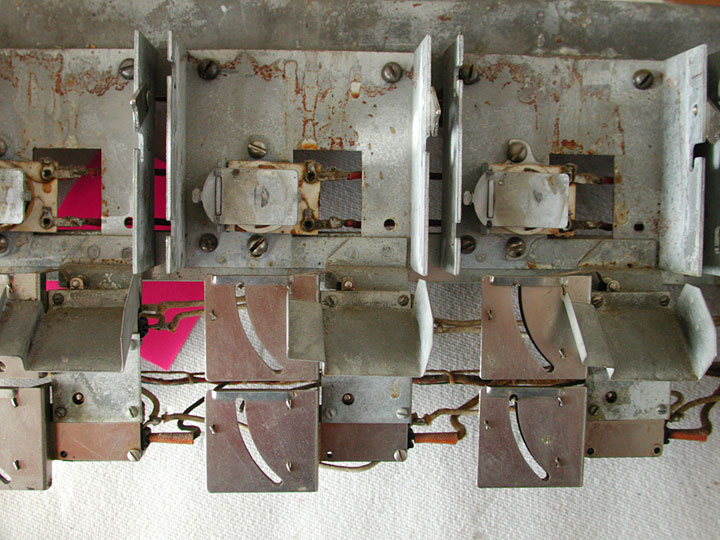
The coin head accepts coins inserted by the player. It consists of a different position for each horse.
First, there is a relay with a tab on the actuating plate that shoves coins to the reject slot, the chute on the right, if the game is not ready to play. The relay plate can be reversed so that all coins are accepted. Upon delivery, this game had three turned and two working.
Second, the coins pass through a coin mech. The coin mechs (slug rejector, coin acceptor) have been removed for this picture. They sit in the slots in front of the relays. A slug or incorrect denomination will be shoved to the right and will pass through the chute to the reject slot.
Third, if the coin is correct, it will trip the two switches. The game will detect if the switches are tripped at significantly different times, as if a player were trying to cheat the machine, which will then prevent the credit. When the switches are tripped correctly, the game will register a bet on the horse.
These metal parts were dissembled, cleaned and reassembled. The relays were mounted correctly to prevent coins from passing if the game was not ready.
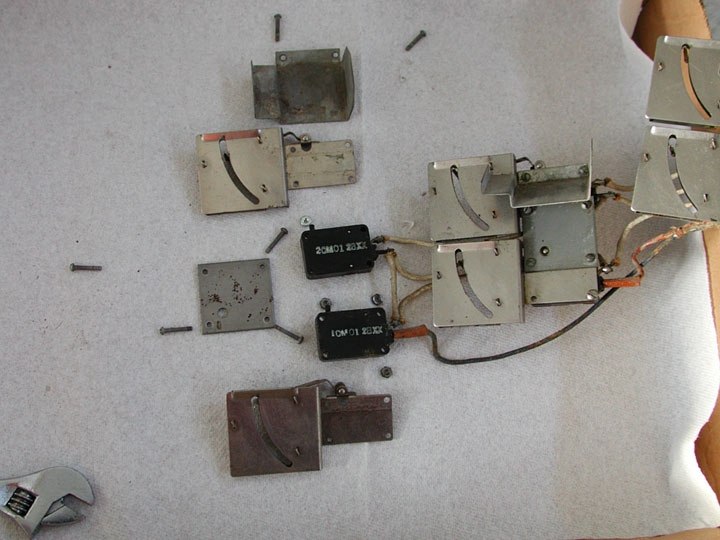
The switches are cobbled together with a series of screws and plates.
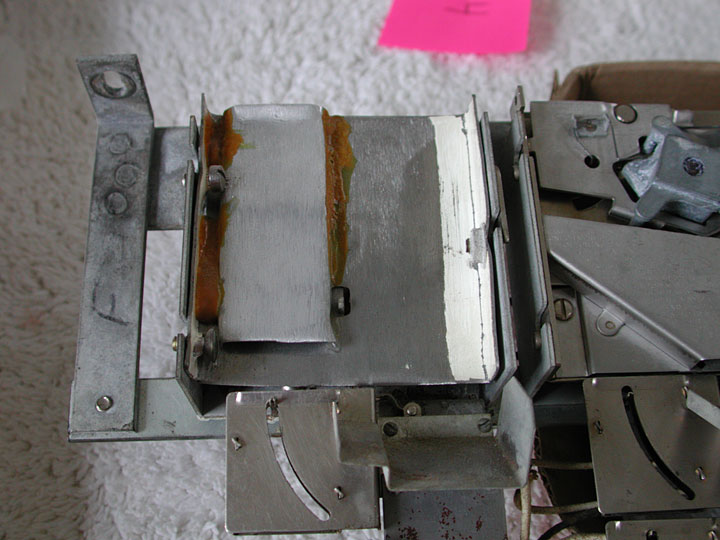
The game arrived with five correct ABT coin mechs and two fabricated chutes! The fabricated chutes passed the coin down to the switches directly and did not check the denomination or if the coin was a slug. The correct ABT coin mech is visible on the right. (I need to mechs if you have any for sale!)
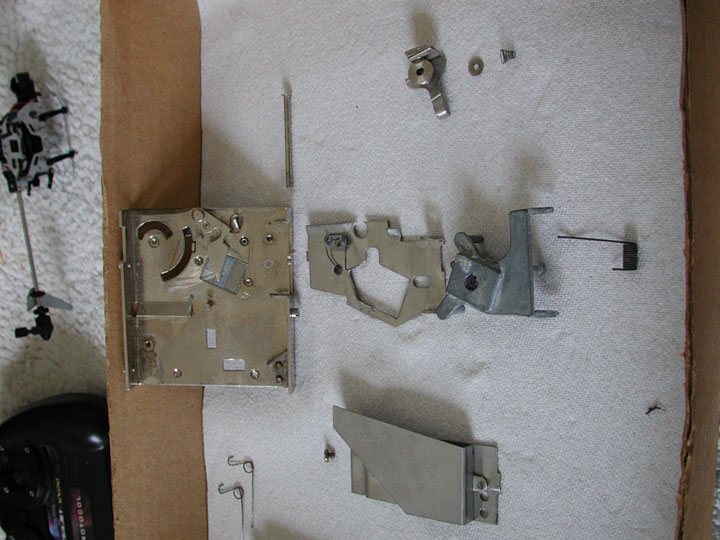
The coin mech is disassembled for cleaning. There are not that many moving parts and so it is easy to clean. Normal cleaning requires mild dish soap and warm water. There are not lubrication points. The mechs are easily removable as coins carry a lot of dirt and grease with them and therefore the mechs required frequent cleaning in a commercial environment.
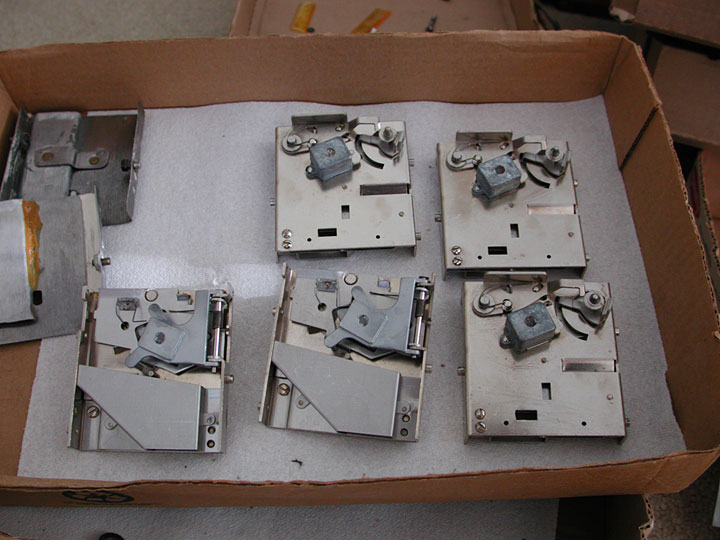
The five coin mechs have been cleaned and adjusted. They are ready for installation. The reject relay tab fits into the vertical hole in the middle of the coin mech. This causes the coin to be diverted to the reject chute. The two fabricated coin chutes are visible on the left. They will be used until I can find ABT coin mechs.
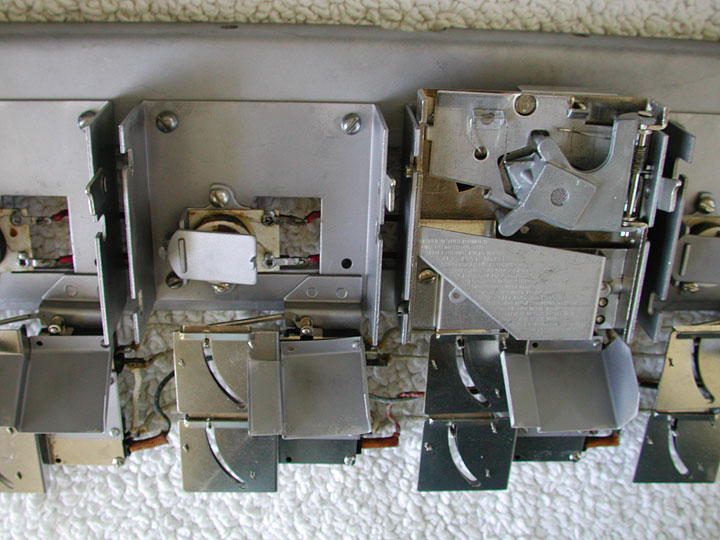
This is the restored coin head, showing two of the seven slots. The one on the right has the coin mech installed.
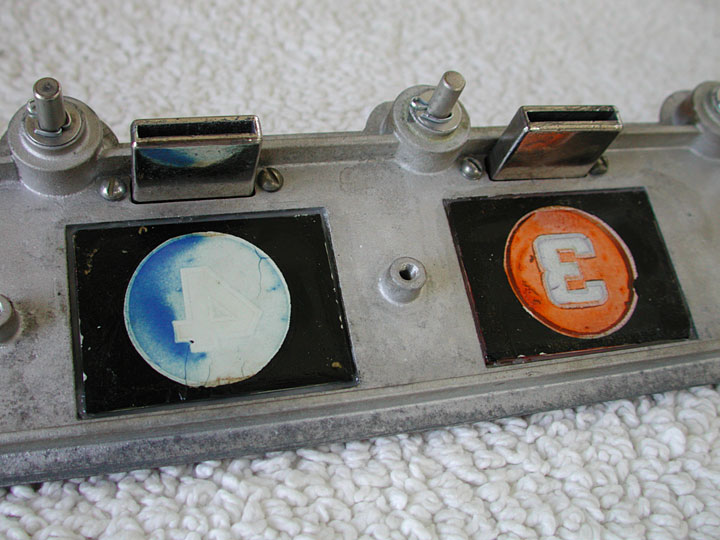
These are the glass plates that identify the number of the horse. Each horse has a coin slot. The glass plates were affixed to the casting with a material similar to sidewalk cement. It was crumbling in places and difficult to remove in others. The glass plaques were removed and the colors touched up around the edges where they were resting on the wood of the cabinet. The black out was also renewed to prevent the light from shining through places that were missing paint. The plaques were then clear coated on the back to prevent further deterioration.
Care was taken to make sure the casting was clean and no material was left in the grooves. A plaque might break if compressed between a bit of dirt and the casting. The plaques were installed with silicon calk. A tiny amount was allowed to stay at the bottom of the glass to protect it from the wood of the cabinet.
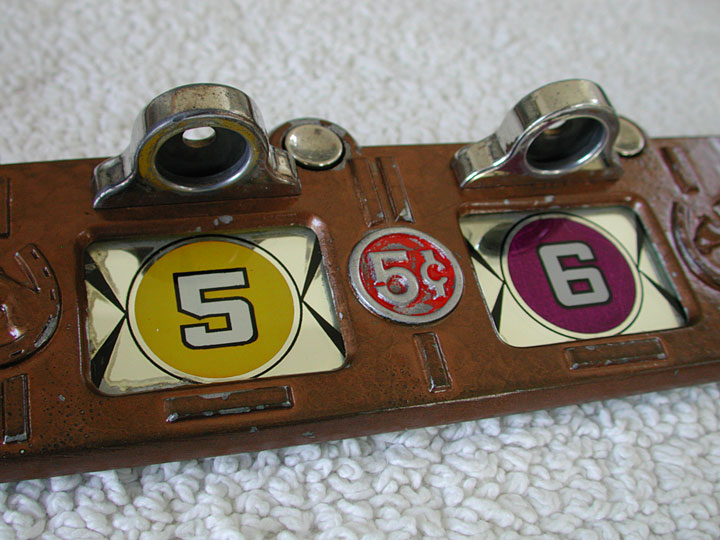
As stated many times before, human oil and sweat are some of the most corrosive materials available. The coin slots are worn and some of the chrome has been etched off. The coin slots were polished and existing corrosion removed. I did not repaint any of the graphics, preferring to keep the original patina. The lifting of the reverse artwork on the number plaques is visible around the five. Drinks or other liquids spilled on the front of the machine will run down around the edge of the numbers and lift the artwork. Now the number plates are located with silicon calk, which, along with the clear coat on the back of the plates, should protect the plates from further damage.
